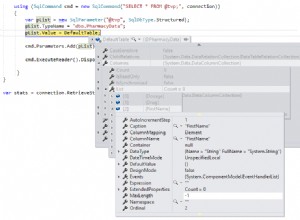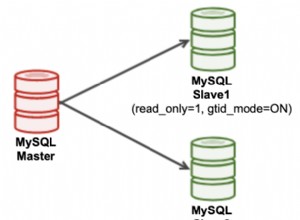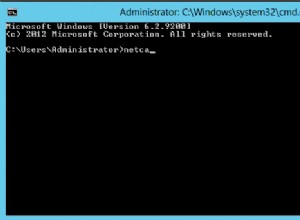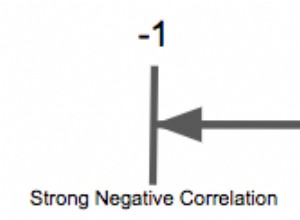Scala :
Se tutto ciò di cui hai bisogno sono numeri univoci puoi usare zipWithUniqueId e ricreare DataFrame. Prima alcune importazioni e dati fittizi:
import sqlContext.implicits._
import org.apache.spark.sql.Row
import org.apache.spark.sql.types.{StructType, StructField, LongType}
val df = sc.parallelize(Seq(
("a", -1.0), ("b", -2.0), ("c", -3.0))).toDF("foo", "bar")
Estrai lo schema per un ulteriore utilizzo:
val schema = df.schema
Aggiungi campo ID:
val rows = df.rdd.zipWithUniqueId.map{
case (r: Row, id: Long) => Row.fromSeq(id +: r.toSeq)}
Crea DataFrame:
val dfWithPK = sqlContext.createDataFrame(
rows, StructType(StructField("id", LongType, false) +: schema.fields))
La stessa cosa in Python :
from pyspark.sql import Row
from pyspark.sql.types import StructField, StructType, LongType
row = Row("foo", "bar")
row_with_index = Row(*["id"] + df.columns)
df = sc.parallelize([row("a", -1.0), row("b", -2.0), row("c", -3.0)]).toDF()
def make_row(columns):
def _make_row(row, uid):
row_dict = row.asDict()
return row_with_index(*[uid] + [row_dict.get(c) for c in columns])
return _make_row
f = make_row(df.columns)
df_with_pk = (df.rdd
.zipWithUniqueId()
.map(lambda x: f(*x))
.toDF(StructType([StructField("id", LongType(), False)] + df.schema.fields)))
Se preferisci il numero progressivo puoi sostituire zipWithUniqueId con zipWithIndex ma costa un po' di più.
Direttamente con DataFrame API :
(Scala universale, Python, Java, R praticamente con la stessa sintassi)
In precedenza ho perso monotonicallyIncreasingId funzione che dovrebbe funzionare bene purché non siano necessari numeri consecutivi:
import org.apache.spark.sql.functions.monotonicallyIncreasingId
df.withColumn("id", monotonicallyIncreasingId).show()
// +---+----+-----------+
// |foo| bar| id|
// +---+----+-----------+
// | a|-1.0|17179869184|
// | b|-2.0|42949672960|
// | c|-3.0|60129542144|
// +---+----+-----------+
Mentre utile monotonicallyIncreasingId non è deterministico. Non solo gli ID possono essere diversi da esecuzione a esecuzione, ma senza trucchi aggiuntivi non possono essere utilizzati per identificare le righe quando le operazioni successive contengono filtri.
Nota :
È anche possibile utilizzare rowNumber funzione finestra:
from pyspark.sql.window import Window
from pyspark.sql.functions import rowNumber
w = Window().orderBy()
df.withColumn("id", rowNumber().over(w)).show()
Purtroppo:
Finestra WARN:nessuna partizione definita per il funzionamento della finestra! Spostando tutti i dati in una singola partizione, ciò può causare un grave degrado delle prestazioni.
Quindi, a meno che tu non abbia un modo naturale per partizionare i tuoi dati e garantire che l'unicità non sia particolarmente utile in questo momento.




